House music is all about groove, rhythm, and energy.
It can lift the mood of a room and make people lose themselves on the dance floor all night long.
That’s why, as an electronic music producer, learning how to make house music can really elevate your skills and help you stand out over the competition.
Whether you want to produce electronic music tracks that get the crowd moving or create deep, immersive beats that resonate long after the last note, mastering house music production is key.
That’s why we’re breaking down everything you need to know about producing house music, like:
- The history of house music ✓
- Essential gear and software (e.g., drum machines) ✓
- Understanding house music structure ✓
- Layering kicks, percussion, and other drum sounds ✓
- Designing the perfect bass line for your own tracks ✓
- Laying down melodies and chords ✓
- Vocal sampling and processing ✓
- Sound design techniques for electronic music ✓
- Improving your own house music arrangements ✓
- Advanced tips and tricks ✓
- Much more about how to make house music ✓
After reading this article, you’ll know everything about how to make house music like a true expert, regardless of your skill level.
You’ll be able to produce house tracks that keep the dance floor packed and design sounds that are unique, innovative, and powerful.
Plus, your tracks will always hit hard and sound polished, no matter where they’re being played, with that classic house edge.
So, let’s dive right in so you can learn how to make house music like a pro…
Table of Contents
House Music: A Brief History
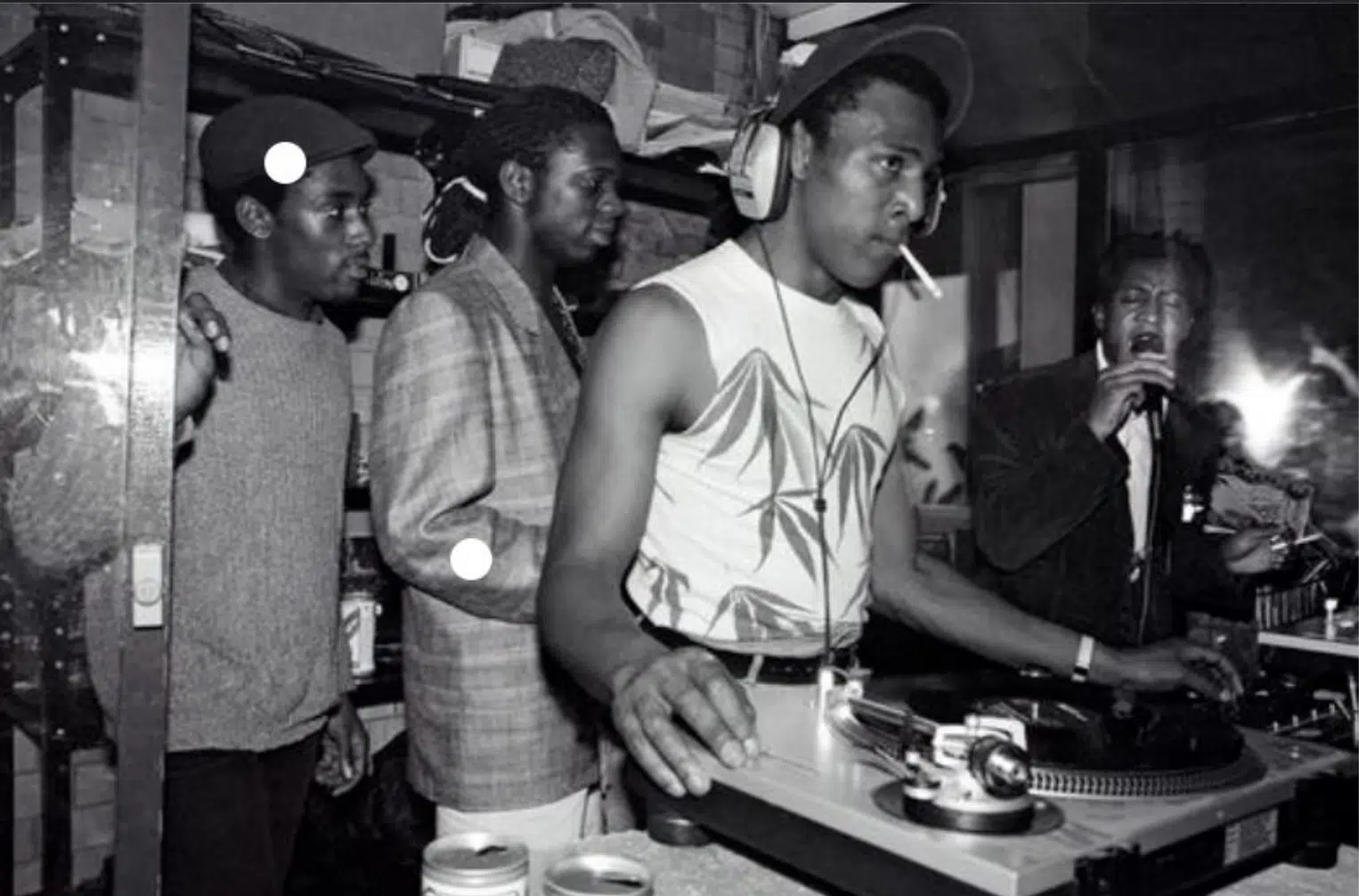
Chicago, 1981
Early house music really got its start in the sweaty, dimly lit clubs of Chicago in the early 1980s and instantly made major waves.
DJs like Frankie Knuckles and Larry Heard were mixing up disco records with electronic drum machines, creating the kind of grooves that kept people dancing all night.
Tracks like “Your Love” by Frankie Knuckles became blueprints for house music, with their four-on-the-floor kick drum patterns and infectious bass lines.
As house music spread to New York, London, and beyond, it evolved into sub-genres like deep house, tech house, and progressive house.
Each one brought its own unique flavor to the electronic music scene.
Today, house music is still a cornerstone of electronic dance music 一 influencing everything from mainstream pop to underground beats.
Making house music to the best of your ability requires you to really know about its roots, so make sure to really get immersed in the culture.
Essential Gear and Software for Producing House Music
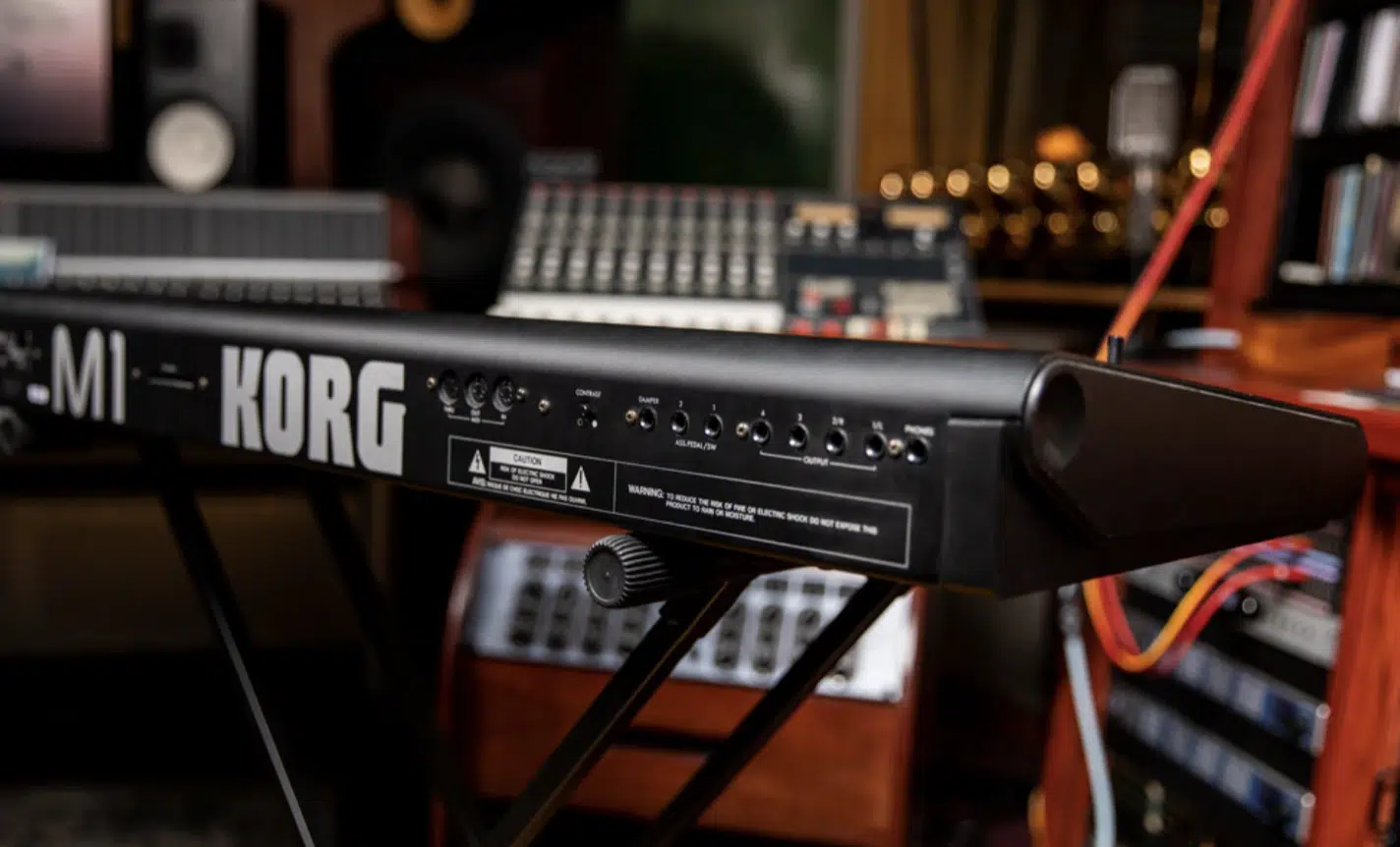
When you’re setting up for house music production, the gear you choose can make or break your sound, there’s no two ways about it.
Your digital audio workstation (DAW) is where everything happens; whether it’s Ableton Live or FL Studio, it’s your playground for producing house music.
So, needless to say, it’s one that you should be comfortable working in or feel matches your unique workflow.
Classic drum machines like the Roland TR-909 are essential for creating those unmistakable four-on-the-floor kick drum sounds that define many house tracks.
If you’re unsure what four-on-the-floor patterns are, we got you covered.
For the sound design thing of things, synths like the Korg M1 (famous for its house music piano sounds) and plugins like Serum are key for creating deep bass lines and lush chord progressions that give your house track that rich, full sound.
And don’t skimp on your studio monitors, either…
Yamaha HS8s are great for making sure your house music sounds good no matter where it’s played, from your home studio to a packed club.
Side note, if you want to check out the absolute best VST synths from top players like Native Instruments and Arturia, we got you covered.
Understanding House Music Structure
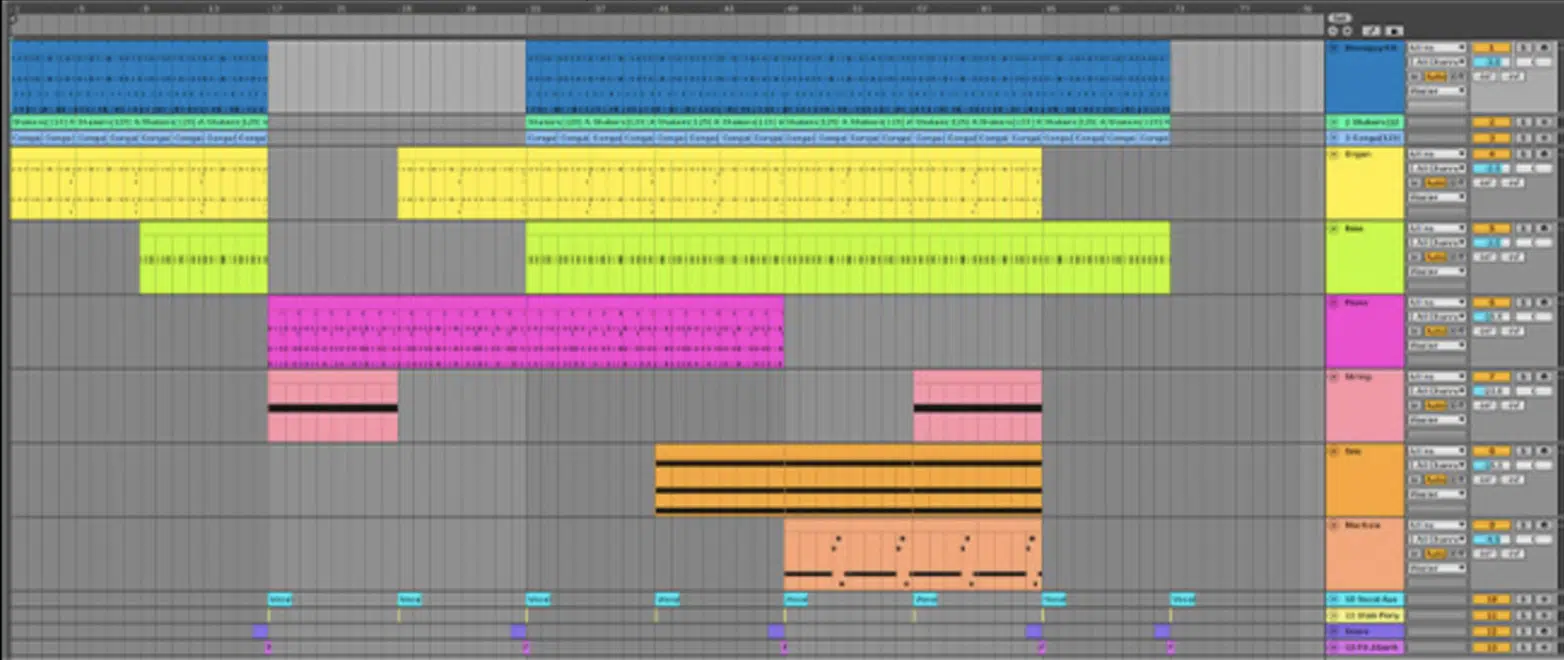
Understanding the structure of house music is super important when you’re learning how to make house music, because it’s all about the flow and keeping people hooked.
A typical house track follows a basic song flow:
- Intro
- Build-Up
- First Drop
- Chorus
- Breakdown
- Second Build-Up
- Second Drop
- Outro
You’re going to start with an intro that really reels people in and gets them interested right off rip.
Here, you could introduce subtle elements like a rising pad or filtered synths to gradually build tension and prepare the listener for what’s to come.
Following the intro, a build-up is used to increase tension before the first drop.
This section might include elements like snare rolls, risers, and escalating melodies, which all work together to hint that something big is about to happen.
You could try gradually increasing the tempo, pitch, or adding automation effects (e.g., filters) to enhance the intensity.
It’s then followed by the first drop, introducing the main elements like the kick drum, bass line, melodic hook, etc.
Keep in mind that, in house music, the drop isn’t as abrupt or aggressive as in genres like dubstep. Instead, it smoothly integrates all the key elements, sets the groove, and establishes the track’s main theme/vibe.
Then, you’re going to move into a breakdown, where you strip back the elements to create tension, before leading into a second drop that’s even more impactful.
For example, you could pull back the bass line and kick drum 一 letting the melody or a vocal sample take center stage for a minute.
The breakdown is usually followed by a second drop, which is often more intense than the first one.
In this section you might throw in some additional elements or variations on the original theme, like a more complex bass line or added percussive layer.
NOTE: The second drop should be designed to hit harder, reigniting the energy and driving the track forward with new momentum.
The outro gradually deconstructs the track 一 making it easy for DJs to mix into the next song (like reducing the melody to just a few notes).
Remember, the goal is to end the track in a way that feels natural and satisfying, leaving the listener wanting more.
Keeping this structure in mind helps in producing house music that’s not only catchy but also dominates the dance floor.
-
Pro Tip: Importance of Tempo and BPM in House Music
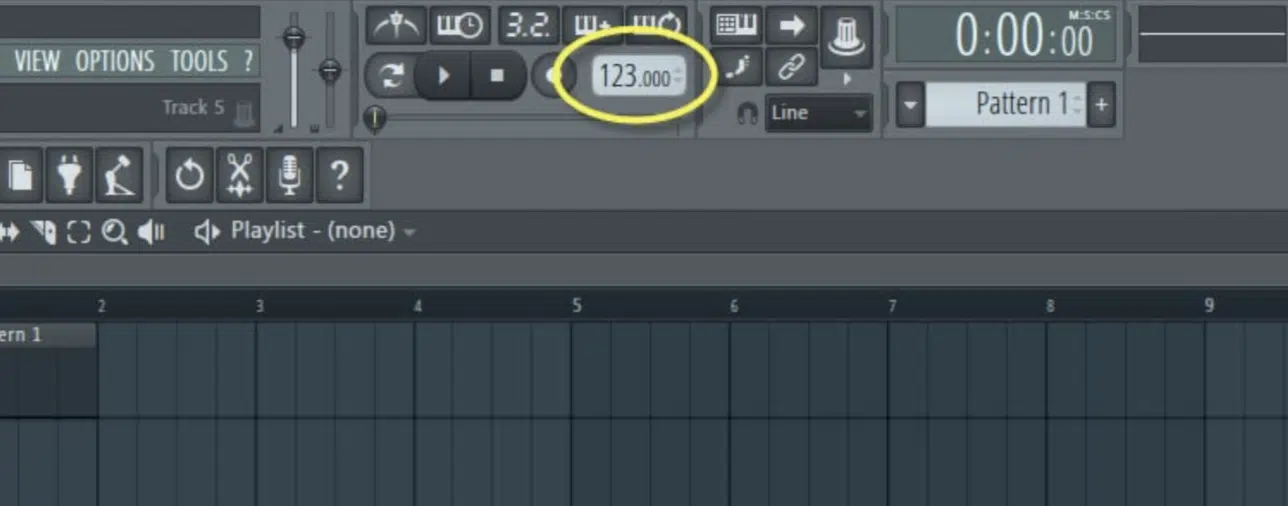
The tempo of most house tracks and house sub-genres sit between 120-130 BPM, giving big energy.
Genres like deep house leaning toward the lower end and progressive house pushing toward the higher end.
When you’re learning how to make house music, try to stick within this general range.
It will make sure your house track fits well with others in a DJ set 一 making it easier to mix and keeping the crowd moving.
NOTE: Experimenting with slight BPM variations can give your track a unique feel while still fitting into the broader house music genre.
How to Make House Music: Breaking it Down
Now that the basics are clear, it’s time to dive into the production process of how to make house music. Let’s break down the key steps in how to make house music, from layering your kick drums to creating those groovy bass lines and infectious melodies.
-
Layering Kicks: Creating a Solid Foundation

When it comes to house music, the kick drum is the heartbeat of your track, so getting it right is super important.
Start by selecting two or three kick samples that complement each other, with each one serving a specific purpose, like:
- One 一 For the deep, subby low end.
- Another 一 For the mid-range punch.
- Possibly a third 一 For the top-end click.
Once you’ve selected your samples, you’ve got to make sure your kick samples aren’t out of phase, because if they are, they can cancel each other out.
This will give you a much weaker sound, which you never want.
To avoid this, check the phase of each sample by aligning the waveforms and making sure their peaks and troughs match up.
You can do it manually with the timing or simply use a plugin.
Use a low-pass filter on the sub-heavy kick to remove any unnecessary high frequencies, and a high-pass filter on the top-end kick to focus on the click without interfering with the lows.
Tuning is very important when you’re learning how to make house music as well.
So, pitch your kicks up two octaves so you can clearly hear their tonal differences, then tune them to match each other before bringing them back down.
This ensures they blend seamlessly into one powerful, cohesive kick (which is key).
Finally, apply gentle compression to glue the layers together 一 making sure your kick drum cuts through the mix without overpowering other elements.
NOTE: To add even more character, try adding a touch of saturation to the kick drum. This adds harmonic distortion, making the kick sound warmer and more aggressive. This can be especially effective in genres like tech house or bass house.
-
Adding Percussion: Claps, Snares, and Hi-Hats
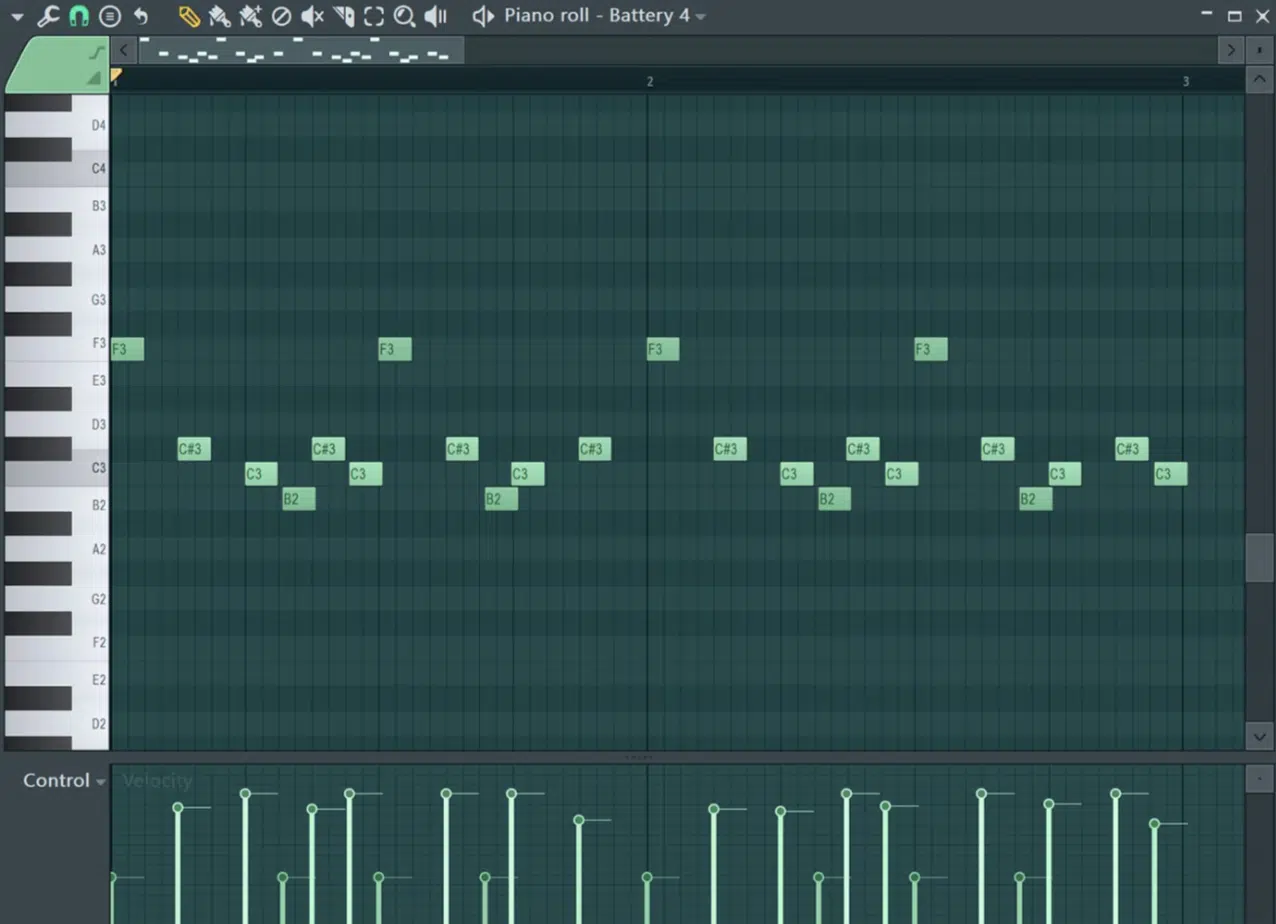
Percussion is the groove engine of house music, and how you tweak it can make or break your track.
Start by placing claps or snares on the second and fourth beats of each bar, a classic house technique that creates a steady, danceable rhythm.
To add depth, layer these with subtle percussion elements like shakers or tambourines, which can fill out the high-end frequencies and add texture.
Hi-hats are essential for driving the groove, so use:
- Closed hi-hats on every eighth note to keep the energy up.
- Open hi-hats on the offbeats for that signature house swing.
To create a more dynamic feel, experiment with ghost notes.
These quieter, off-beat hits (typically using rim shots or light snares) add a syncopated groove that makes your rhythm more interesting and complex.
They can be placed just before or after the main beats to create a sense of anticipation or follow-through
Don’t forget to pan your percussion elements 一 spreading them across the stereo field will sound good and give your track a wider, more spacious feel.
NOTE: To take it a step further, consider applying subtle effects like reverb or delay to certain percussion elements.
A short, tight reverb on the snare can add depth without overwhelming the mix, while a subtle delay on a hi-hat can create an echo effect that fills out the groove.
This attention to detail will ensure that your house track not only grooves but also keeps the listener hooked from start to finish.
-
Groovy, Baby (Swing & Shuffle)

Believe it or Not, Swing in FL Studio Doesn’t Have to be Global. It Can be Done on a Per-channel Basis (shown above).
Creating a captivating groove in house music is all about the subtle tweaks that make a beat feel more human and less mechanical.
Swing and shuffle techniques are your best friends when you’re learning how to make house music because they add that signature bounce that people absolutely love.
Instead of quantizing every hit, experiment with nudging certain elements (like hi-hats or snares) slightly off the grid.
For example, shifting the timing of your hi-hats or claps just a few milliseconds can create a laid-back feel 一 transforming a standard loop into something that feels alive.
NOTE: To do this, you can use your DAW’s “nudge” or “delay” function to move individual hits slightly forward or backward in time, which allows the groove to breathe.
To add even more flavor, throw in some shuffled patterns (where beats are unevenly spaced); it creates a rolling, syncopated rhythm that adds complexity and depth.
Remember, if you want your house track to really blow the competition away, you need to switch things up and get creative.
Also, using varying levels of swing on different percussion elements can result in intricate, interlocking rhythms that give your track a unique, driving energy.
All without losing its groove or overall integrity.
For even more depth, triplets or off-beat hits in your patterns can add a syncopated feel that surprises the listener, so make sure to play around with that as well.
-
Pro Tip: The Essential House Drum Patterns
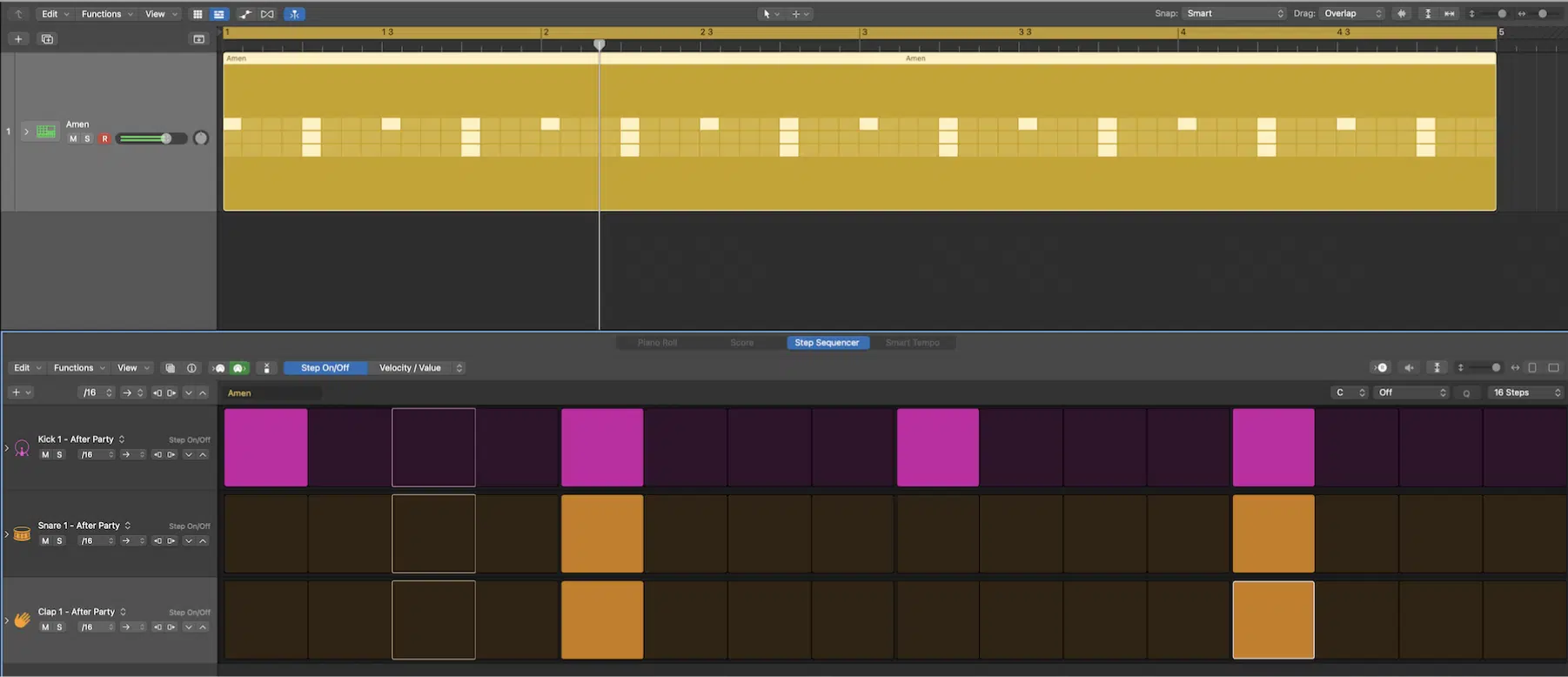
Four-on-the-floor in Logic Pro’s Step Sequencer
House music thrives on rhythm, and the right drum pattern is what keeps the energy flowing.
The foundation of nearly every house track is the iconic four-on-the-floor beat, where the kick drum lands on every beat in a measure, creating that driving, relentless pulse.
However, the real magic happens when you start layering in other elements.
A snare or clap on the second and fourth beats brings the groove into focus and gives listeners something to latch onto.
NOTE: To make this layer more interesting, consider layering multiple clap samples 一 a sharp, snappy clap combined with a softer, more diffuse one can add depth and texture.
You can also slightly delay one of the claps by a few milliseconds to create a subtle flam effect, which adds a touch of swing and human feel to the rhythm.
But to really make your drum pattern stand out when you’re learning how to make house music, think beyond the basics…
Experiment with syncopation by placing claps or hi-hats slightly off the beat, or introduce rolling hi-hat patterns that play with rhythm and timing.
Add some flavor by incorporating auxiliary percussion like bongos, congas, or even rim shots to give your track that extra layer of groove.
When you’re learning how to make house music just remember it’s all about movement, by any means possible.
So, don’t be afraid to break the mold and create patterns that push all the boundaries while still keeping the dance floor engaged.
-
Designing the Bass Line
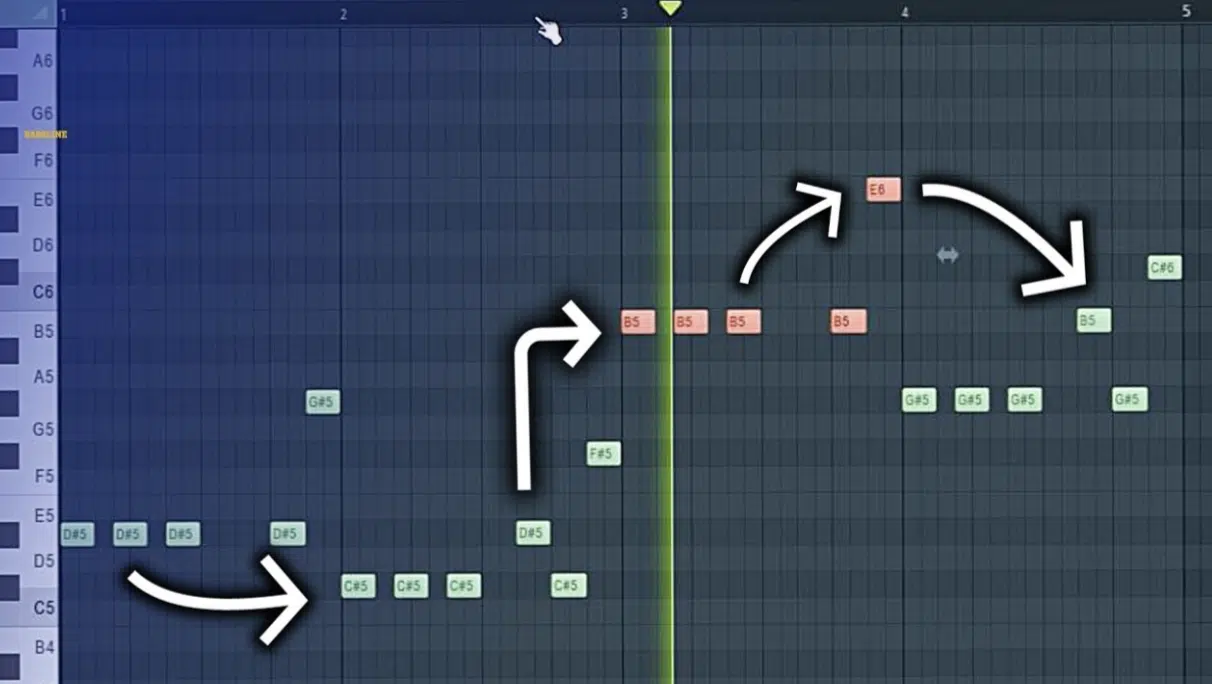
The bass line is going to glue your tracks together, and get people really hyped up, excited, and (most importantly) engaged.
Start by choosing a bass sound that matches perfectly with your kick:
- Subby and deep for genres like deep house.
- Punchier for more energetic styles like tech house or progressive house.
When writing bass lines, think in terms of rhythm as much as melody; simple, repetitive patterns often work best.
This is because it allows the bass to lock in tightly with the kick drum.
A classic approach is to have the bass hit on the first and third beats, syncing with the kick, but again, don’t be afraid to add syncopation for a funkier feel.
For example, you could add an extra note just before or after the main beats to introduce a bit of tension and release.
Adding subtle pitch bends or slides between notes can also enhance the fluidity of your bass line 一 making it more expressive and less robotic.
A quick slide up to a higher note or a slow pitch bend down to a lower one can add a lot of character to your bass and really change everything.
To make your bass line sound even more professional, try layering it with a higher-octave synth bass or even a sampled bass guitar to add some harmonic content.
Sidechain compression is another must-use technique, ducking the bass slightly every time the kick hits for that signature pumping effect that defines many house tracks.
Finally, use EQ to carve out space in the mix, cutting frequencies that clash with the kick (typically around 50-100 Hz) and boosting those that make the bass stand out (like around 200-400 Hz for mid-range presence).
-
Laying Down House Melodies and Chords

Melodies and chords are where your house track starts to take on its unique character, setting the mood and adding emotional depth.
When laying down melodies, keep them simple and catchy 一 house music thrives on repetitive hooks that get stuck in the listener’s head.
A melody that is too complex can detract from the groove, so focus on creating something that is unforgettable and easy to follow.
Use a classic house piano or a smooth synth pad to play your chords, sticking to common progressions like I-IV-V or ii-V-I, which provide a solid foundation.
For added depth, try layering your chords with different sounds, such as a lower octave for warmth or a higher octave for brightness.
Make sure to pan them slightly for a wider stereo image.
A technique often used in progressive house is to gradually build up the chord progression throughout the track.
You can add notes or change inversions as the energy ramps up, which is always solid.
For example, starting with a simple triad and then expanding to a seventh or ninth chord as the track progresses can add emotional intensity/complexity.
Arpeggiators can also be great, automatically playing chords in a sequence that adds movement and complexity without overwhelming the groove.
As you build your melody and chords, make sure to regularly reference other house tracks to ensure your sound fits within the electronic music genre while still standing out over other tracks.
-
Vocal Sampling and Processing
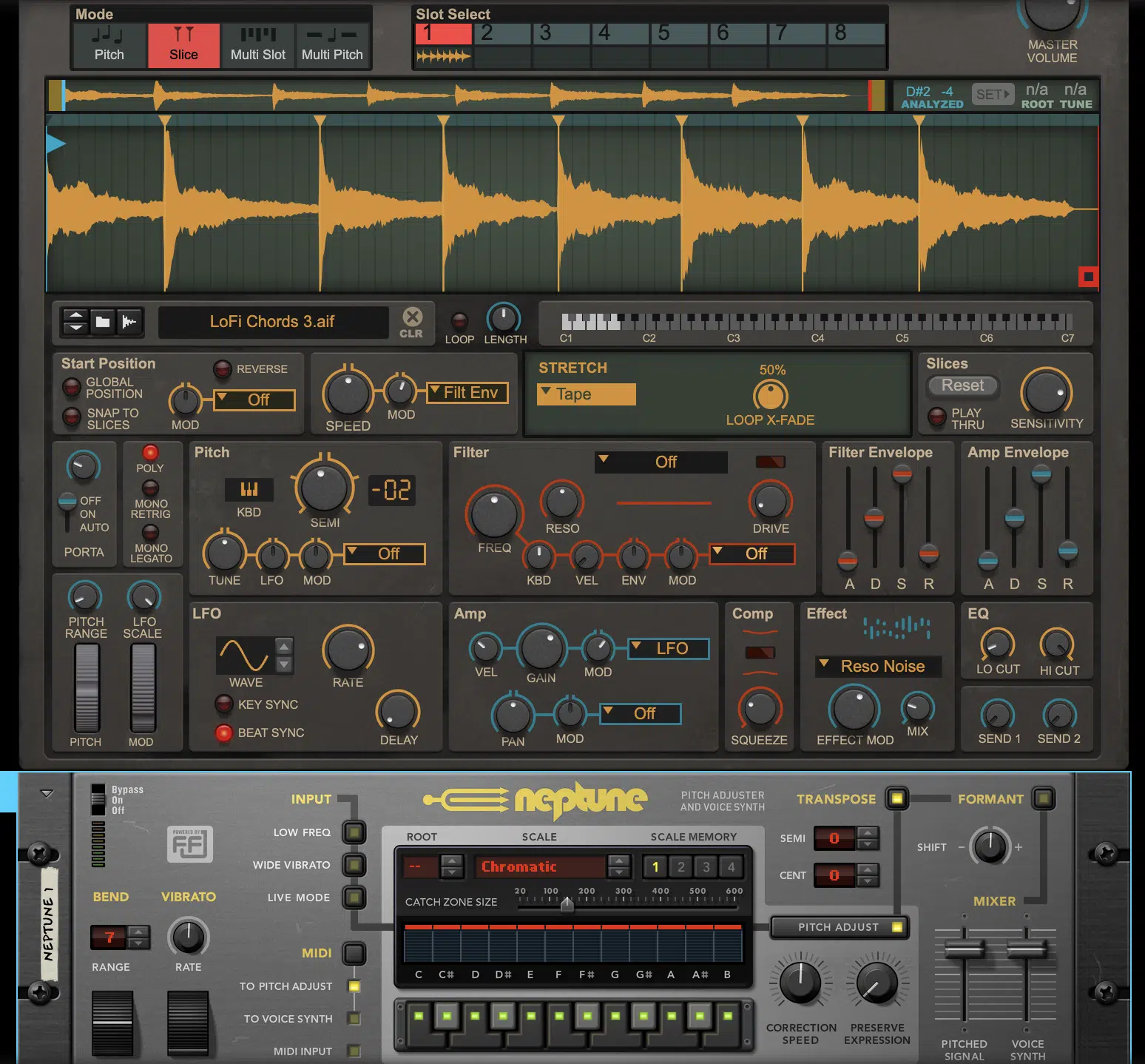
Using a Vocoder & Sampler With the Drums as a Modulating Source for a Very Unique, Underestimated Sound.
Vocal samples can add a unique edge to your house track, turning a good beat into a memorable anthem (like, Skrillex level anthems).
Start by choosing sampled vocals that fit the overall vibe of your track, whether it’s a soulful phrase for a deep house groove or a chopped-up vocal for a more ‘techy’ feel.
If you want the best vocal samples in the game, we’ve got you covered.
Once you’ve selected your sample/sample packs, processing is key, so use pitch correction to ensure the vocal sits perfectly in tune with your track, then apply EQ.
Reverb and delay are your best friends here 一 adding these effects can create a sense of space and atmosphere, making the vocal feel more integrated into the mix.
You can experiment with different reverb settings, like plate reverb for a classic sound or hall reverb for a more spacious, ethereal feel.
And for delay, a short slapback delay can thicken the vocal, while a longer, tempo-synced delay can create echo effects that add movement and interest.
For a more creative touch, try slicing the vocal sample and rearranging the pieces to create a new rhythm or even a completely different melody.
You can use your DAW’s slicing tools to chop the vocal into smaller segments, then rearrange and process them with effects like filters, pitch shifts, and reverse playback
NOTE: If your vocal sounds too dry or just don’t sound good, adding a touch of chorus or subtle distortion can help it stand out without dominating the mix.
Lastly, automate the volume and effects to keep the vocal interesting throughout the track, adding dynamics and preventing it from becoming repetitive and boring.
Sound Design in House Music
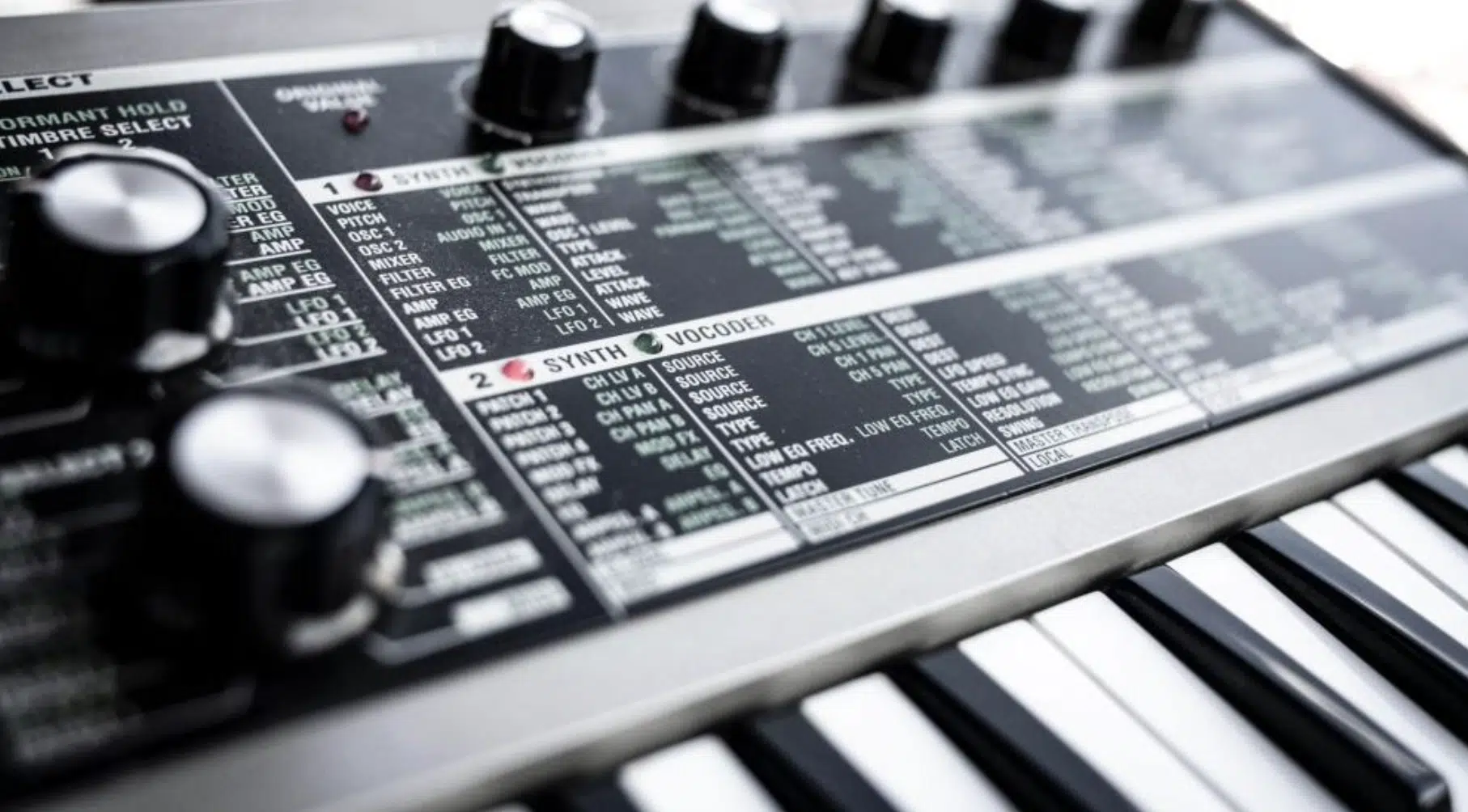
When you’re learning how to make house music, two words should come to mind: sound design.
It’s all about creating unique, memorable sounds that give your track its own identity and show off your skills in the process.
Start with a waveform like a sawtooth or square wave, which are rich in harmonics and perfect for creating deep bass lines or bright lead synths.
Use subtractive synthesis to sculpt these sounds.
If you’re unsure, this involves using filters, like a low-pass filter, to remove unwanted high frequencies and focus on the deep, resonant tones that define house music.
A sine wave can be layered with a slightly detuned sawtooth to add both sub-bass and harmonic impact to your bass line.
Modulation is also key, so try applying an LFO to slightly alter the pitch or filter cutoff because it can make your sounds feel more dynamic and alive.
For instance, applying an LFO to the filter cutoff can create a wobble effect on a bass line, which is popular in genres like deep house and tech house.
On the flip side, using an LFO to modulate the amplitude of a lead synth can add rhythmic variation 一 making the sound more interesting and less static.
Also, use noise oscillators to add texture and character…
White noise, for example, can be mixed with your synths to create airy, atmospheric effects that add depth to your track and reel people in.
I know I said it already, but I’m going to say it again; always remember to balance your sounds using EQ and layering techniques.
You always want to ensure that your track sounds full and cohesive across the entire frequency spectrum.
Bonus: 5 Pro Tips for House Music Production
After you learn the basics about how to make house music, it’s time to step it up a notch, which is where the following few tips (from professionals) come in.
#1. Experimenting with Unconventional Sounds

Nothing is off the Table When it Comes to Foley
Incorporating unconventional sounds can give your house music a seriously unique edge, which you should always be looking for when you’re learning how to make house music.
Try using field recordings/foley sounds (like the sound of rain, city noises, or even mechanical sounds) to add an unexpected texture to your track.
For example, layering a subtle vinyl crackle under your bass line can give your whole track a lo-fi house vibe, while distorted synth effects can add a gritty, underground feel.
Processing these sounds with effects like granular synthesis or reverse reverb can transform them into atmospheric elements that add depth and interest.
Don’t be afraid to push the boundaries when you’re learning how to make house music; these experimental sounds can be what sets your house track apart from the rest.
#2. Using Reference Tracks for Quality Control
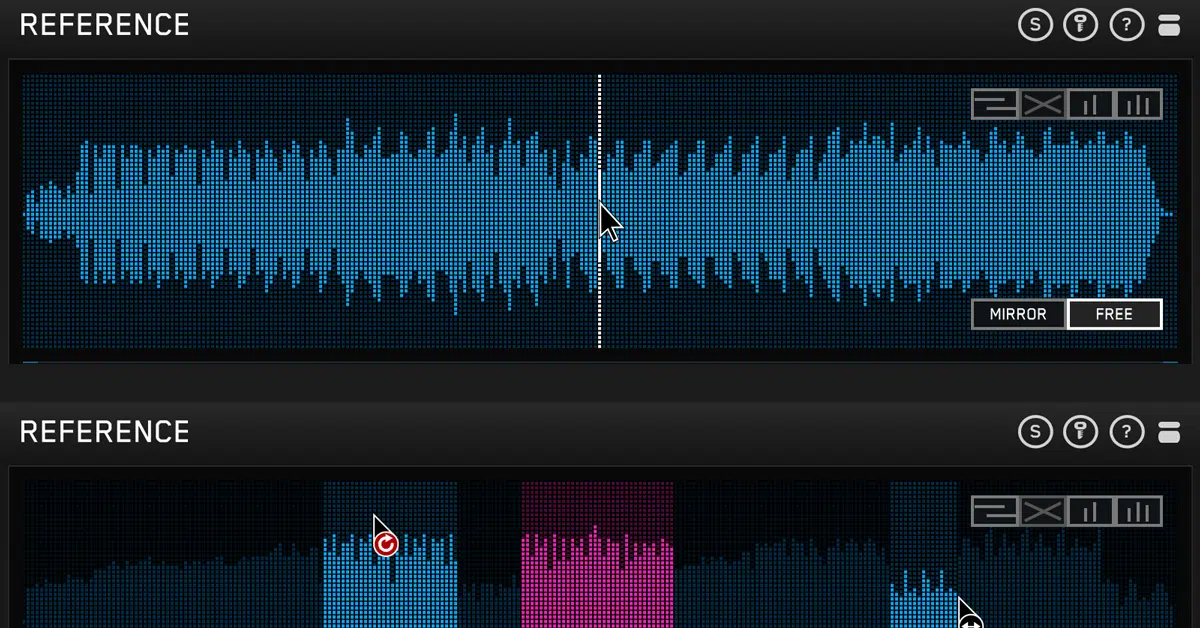
Reference tracks are invaluable when you start making house music; it will help you make sure your house music production flow meets professional standards.
Make sure to choose a reference track that matches the style and energy you’re aiming for in your own tracks, naturally.
This could be deep house, tech house, future house, acid house, big room house, french house, electro house, Chicago house, even disco music, whatever.
Just make sure to regularly compare your mix to it.
Pay attention to how the frequencies are balanced, how the bass line interacts with the kick drum, and the overall loudness and clarity of the track.
If your mix sounds off, use EQ, compression, and reverb to adjust all the elements until they sit well together, always referencing back to your chosen track.
It will help your sound be more polished, professional, and on point as well as sharpen your ear for mixing and mastering tasks (which is always a plus).
It’ll make sure your house track holds up in a real-world setting or streaming service and ensures it will sound good every single time.
Side note, if you want to start producing house music but you’re not sure exactly which type, make sure to check out our EDM genres article.
#3. Sidechain Compression for Groove and Dynamics
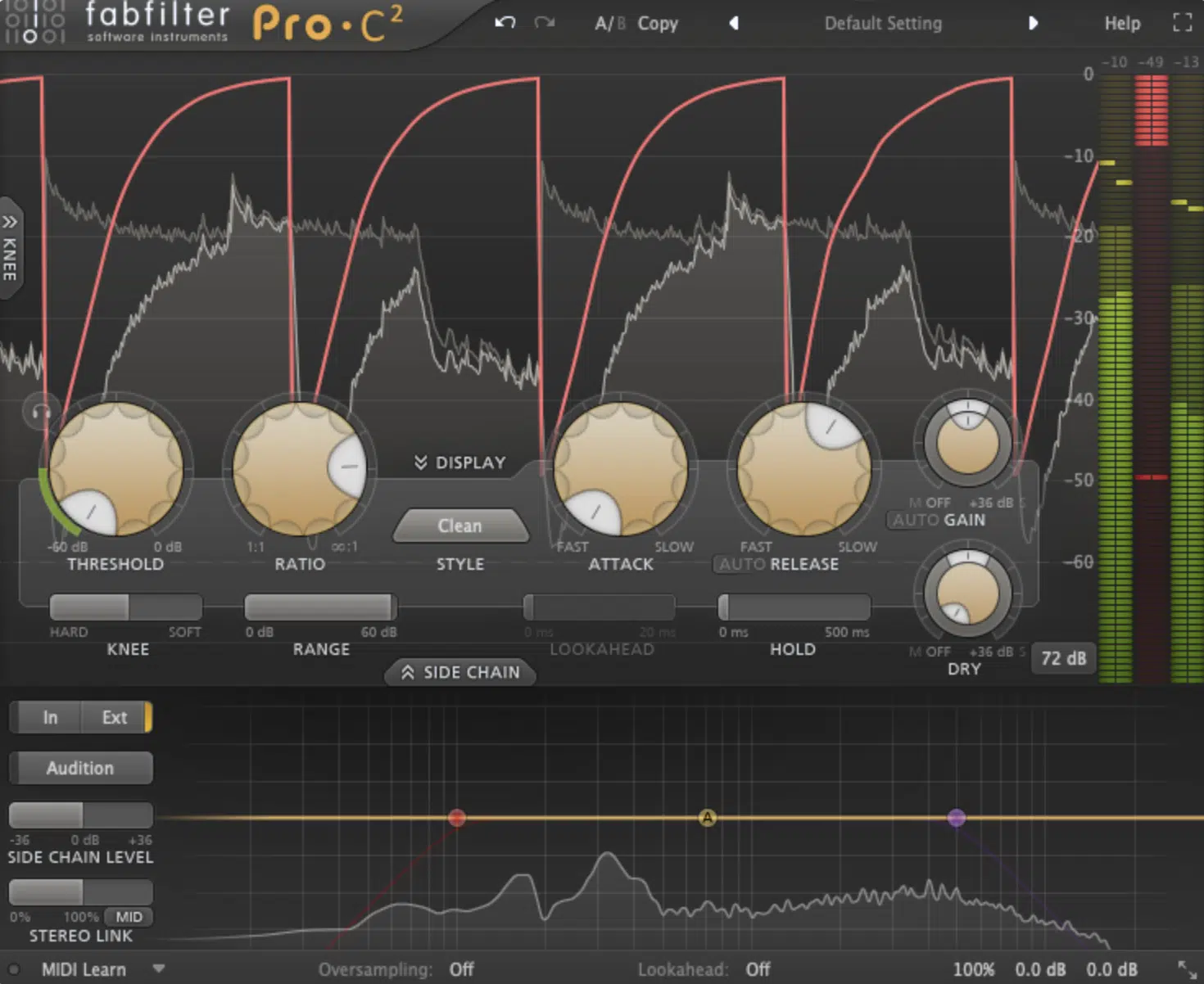
Sidechain compression can help you create the dynamic “pumping” effect that makes the rhythm feel alive.
Apply sidechain compression using the kick drum as the trigger to duck these key elements slightly every time the kick hits to your:
- Bass line
- Pads
- Even your lead synths
This not only keeps the low end clean and punchy but also adds a rhythmic pulse that enhances the groove of your track.
To fine-tune this effect, experiment with the compressor’s attack and release settings 一 allowing you to control how quickly the sound recovers after each kick.
It’s perfect for creating the driving, energetic feel that defines many house tracks, particularly in sub-genres like bass house and big room house.
#4. Adding Subtle Variations to Keep Listeners Engaged
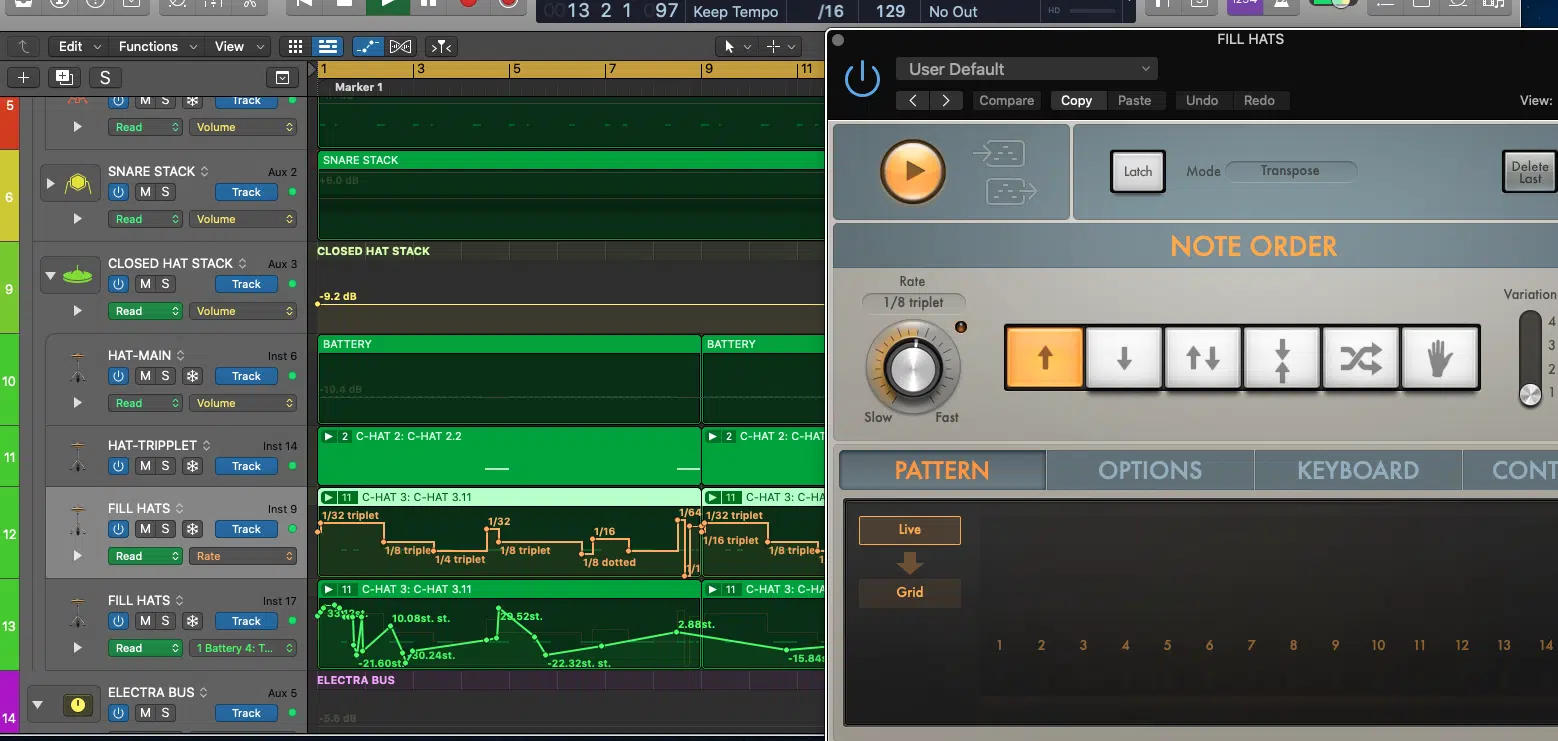
Using Automation in Logic Pro
To keep your house track/future house track engaging from start to finish, subtle variations are non-negotiable.
Every 8 or 16 bars, introduce a new element or change an existing one, like:
- Adding a percussive fill
- Switching up the chord progression
- Altering the hi-hat pattern
When you produce house music, these small changes prevent the track from becoming too repetitive while maintaining the hypnotic groove that house music is known for.
Automation is another powerful tool when you’re learning how to make house music as we mentioned earlier, so don’t forget about that.
Gradually increasing the reverb on a lead synth or adding a slight filter sweep can create a sense of progression and evolution in your track.
It keeps the listener hooked, getting them pumped up all day long.
#5. Long, Hypnotic Build Ups
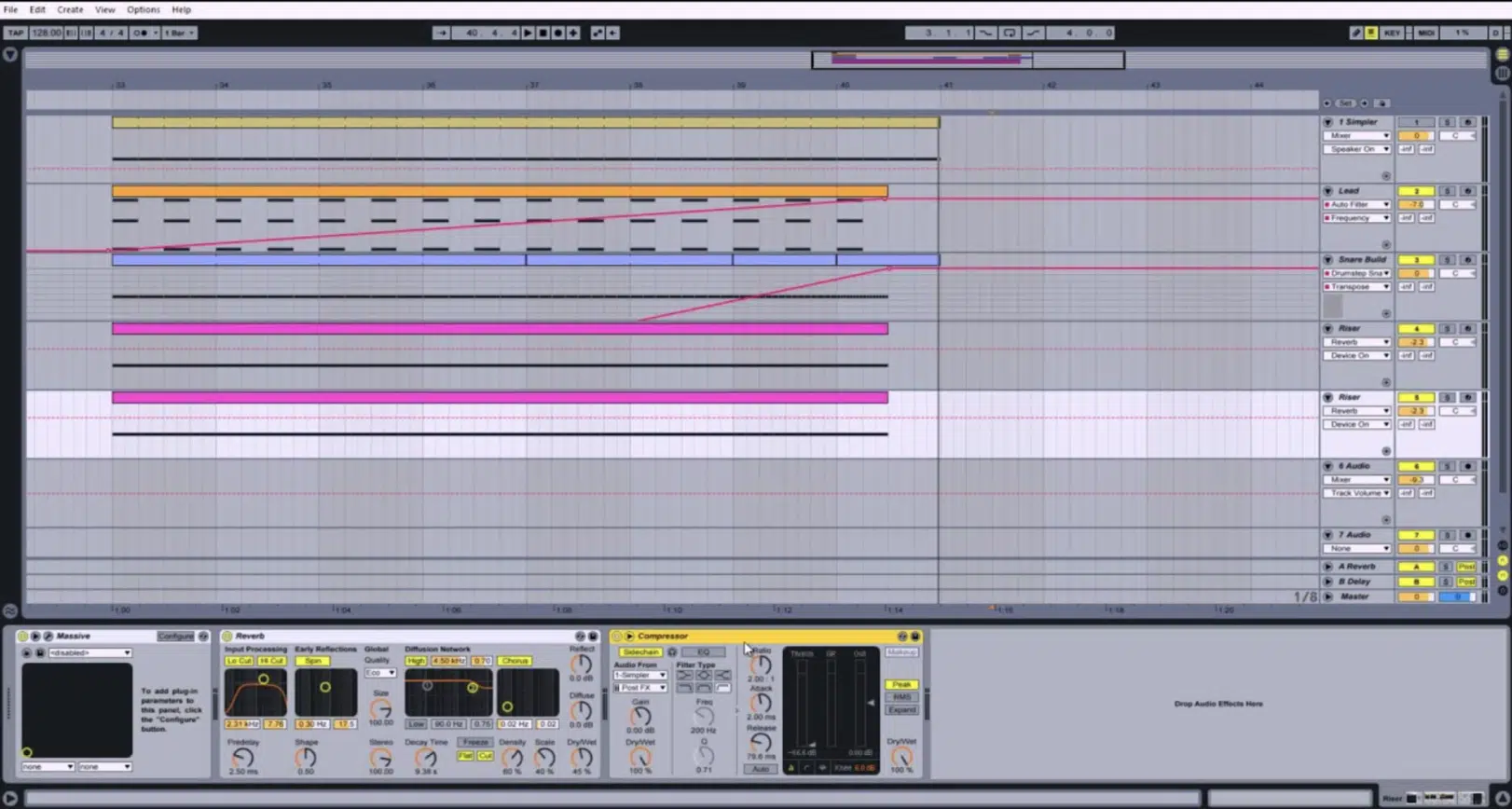
Notice how MIDI Remains Relatively the Same. It’s the Automation (over time) That Takes This Build-up From Just Another Part of the Song to an Actual Transition.
A long, hypnotic build-up is essential in house music, especially when preparing for a drop, so start by introducing rising elements like synths, white noise, and percussion.
Gradually increasing the intensity, not just going full-out.
Again, use automation to slowly open up filter cutoffs, creating a sweeping effect that builds tension (because it’s all about tension and release, especially in the EDM world).
Just before the drop, remove the bass and kick drum entirely, letting the anticipation peak before everything comes crashing back in with full force.
It’ll create a powerful contrast and makes the drop feel even more impactful 一 keeping the dance floor energy at its highest.
How to Make House Music: Final Thoughts
When you’re learning how to make house music, you need to focus on understanding the genre’s rhythmic foundation and mastering sound design.
Plus, creating a groove that keeps listeners engaged (almost hypnotized).
It’s essential to experiment with different techniques and tools to develop your own unique sound so you don’t just sound like everyone else.
And now, with the tips, tricks, techniques, and key information you’ve learned in today’s article, you’ll be able to create house tracks that instantly captivate your audience.
If you’re looking to really learn how to make house music and take your skills to the next level, then you’ve got to check out the Free EDM Drum Kit.
It contains 45 individual drum samples, loops, and MIDIs specifically designed to make your EDM tracks sound clean, crisp, and polished like never before.
If you’re wondering how to make house music that truly punches, these legendary (free) samples are the key
Whether you’re learning how to make house music, deep house, bass house, or tech house, this kit is perfect for creating tracks that are seriously irresistible.
Plus, they were all created by top producers and sound designers, so you know you’re getting access to top-notch quality.
Remember, every great producer started where you are now 一 experimenting, learning, and constantly honing their craft.
So, keep pushing your boundaries, stay creative, and soon enough, you’ll be making house music that is on everyone’s favorite playlist.
Until next time…







Leave a Reply
You must belogged in to post a comment.